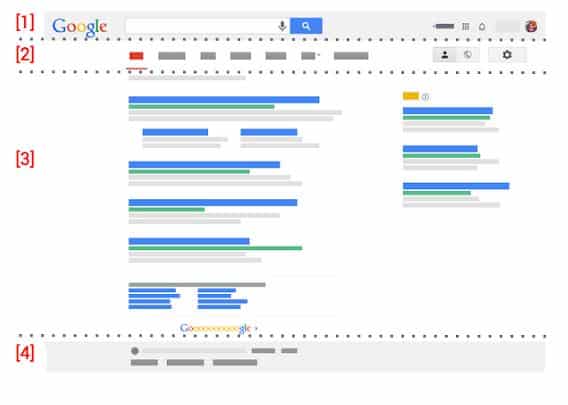The adventure/outdoor industry is facing new challenges in the way they find and attract new customers. As customer behavior changes, tradeshows and marketing shows are drying up, and everyone is figuring out where and how to engage the next customer.
What’s worse is that people continue to use traditional marketing strategies with diminishing levels of success. For small-business owners stuck in the old days, the marketing environment is evolving too fast.
Marketing difficulties in the Outdoor Industry
As a small-business owner, you are advised to be on social media like Facebook, Twitter and LinkedIn. Companies will happily manage and post for you, but unfortunately, you have only a few followers who will ever see all this content, so it’s a little like putting a billboard on the moon until you grow your base of followers — people will see it, but not enough to carry your business.
At this point, you might fall back to old habits like posting ads in phonebooks and classifieds, visiting trade shows, and knocking on doors. And this is shockingly the case for most businesses. As traditional marketing sources have changed and people have been increasingly difficult to connect with, the solution has been to double, triple, and quadruple down on the the same methods. Yes, you may still get calls out of the phonebook, but do you get anyone under the age of 65 calling out of the yellow pages?
Why you need a better website
Skip everything everyone told you about marketing and put yourself in your customers’ shoes. Find out how they search for information and then figure out a strategy to put yourself in front of those eyeballs.
The second question is: Why would you listen to me? Simply put, I am not selling you anything, but I do talk to companies about their online presence and marketing all day. The outdoors is my hobby. When a company that manages 2000 marketing campaigns all over the world is talking and not selling, it’s a good time to listen and learn. As my grandpa used to say, “Mouth closed, ears open now.”
So if we were fishing for leads, where would you start? The boat, lures, line, or rod? All those things are tools, but the net is what catches the fish. The net is your website — the hub of everything you do. You do not want holes in the net because all the effort to get leads there is wasted if the website does not help you convert.
Think of it this way: Why pour water in a leaky bucket? Websites are pretty inexpensive now and relatively easy to make. Think of using a managed website provider like Pronto Marketing, which does all the maintenance, updates, and revisions for a fixed monthly fee. The upfront cost is low, allowing you to get a higher-quality website; and the unlimited updates allow you to stay on top of website trends, season after season.
Breaking down Google search results
Now let’s think about Google search results. The popular search browser is usually the first place you’d visit when you’re looking for something, and so are a lot of people. In fact, 70-90% of new customers say they searched online before making a purchase. This is something you should be tracking.

At the same time, you should also evaluate your business’s ranking when searching for relevant keywords. When you search for keyword phrases like “Best broadheads for whitetail deer” or “Guide services for halibut in Alaska,” does your business get on the first page of Google?
If you happen to place lower than intended, the solution comes down to SEO (Search Engine Optimization). SEO consists of 2 simple things that work hand-in-hand: on-site optimization and off-site optimization.
On-site SEO
On-site SEO involves optimizing your website for relevant keywords. It’s not as complex as it sounds. Basically, it is telling search engines the relevant keywords of your site.
There are a variety of ways it does this, but you need to remember that unless the keywords you’re targeting are not very competitive, on-site SEO will not rank you highly in the search results. There are simply too many websites trying to rank for the same keywords. The difference lies in the second half of SEO, off-site SEO.
Off-site SEO
To put it simply, off-site SEO is everything else on the internet that mentions your website. It could be a news article about your new shop, or a little write-up about the softball team you sponsor. It could be a blog post you wrote about why the fishing has been great this year on an outdoor fishing blog.
Search engines see these mentions relevant to you and view them as votes of confidence. These need to be good websites that mention you, not overseas hair care blogs or other junk. Bad website links can hurt you because search engines view them as spam.
So the more mentions of you on good websites, the more votes of confidence, the higher you rank for relevant keywords.
But how do you get those links? The Better Business Bureau or your local Chamber of Commerce are good places to start. But links like these are easy to obtain and most business websites already have them.
Another option is by writing small articles on blog sites relevant to you. Make sure you include a keyword or two and most importantly, a LINK to your site. Other links count as well. For example, if you donated tickets to the Boyscout online auction and they link to your site, that’s considered a link. The first few come easy, but get a little harder as they go — it works, but it takes time for search engines to find the new links, so be patient.
Once you’ve established these basic tasks, don’t stop as you go up. Your competitors are going down and they will react eventually. Secondly, internet marketing is a perishable commodity. The Boy Scout auction website will be taken down eventually, and blog posts get old and stale or sites just shut down. So your internet marketing tactics are not things you can just set and forget. They need regular attention and should be consistently working to improve your results.
Advertising works, but make sure you don’t waste your budget
This brings us to Facebook’s pay per click and other advertising campaigns. This is a complex and often fruitless venture for many, but they can be successful when highly targeted and part of a much larger campaign.

All too frequently I hear that someone has achieved success with paid ads. But after two months, those people usually come back saying they’ve spent their entire budget on Facebook ads and got limited or no actionable response from it.
I hate to break it to you, but there simply isn’t a magical fix to your sales and marketing woes. Any tactic, whether advertising, SEO, or content, needs to work in conjunction with your other marketing tactics as part of a larger strategy.
As far as pay per click ads, they can get expensive really fast, and you have to know what you are doing to make sure you are getting only the clicks you want, or your $1000 ad budget can get clicked through lightning fast with no action.
Before you get started with Facebook advertising, make sure you have a solid understanding of the platform and how it works. Otherwise, your best bet is to hire a pro to build and manage your campaigns for you.
Don’t forget about email
Now if you’re a fishing guide service in Ninilchik, AK, you better have a list of past customers, and you should be sending them a direct email campaign from your Customer Relationship Management (CRM) tool.
There are tons of CRM options out there that aren’t too expensive. What they do is keep it all together for you — all of your customers and prospects, as well as information about what actions they’ve taken in the past and where they stand in your sales pipeline.
Every single soul you contact is a potential customer. Simply put, that list is your honeyhole, your bread and butter; and if you are not taking advantage of it, you’re missing a HUGE boat.
You should be sending out at least a few emails a year updating these contacts on the goings-on and keeping them primed for a trip next year or a new product you’re launching. This is your first resource when you need to generate revenue.
You can do this by sending out special promotions via email — say, 10% off for returning customers who book a service before August 1? Your CRM will keep your list and help you manage it, and a service like MailChimp will help you get the word out.
Bringing it all together
I know this can be a lot to digest. Marketing is hard not because there’s some magic bullet no one has told you about, but because it means doing a lot of little things across several marketing channels and tactics. Being successful with sales and marketing takes hard work and a lot of hustle.
If you’re not sure where to start, come talk to us to see how we can help.


